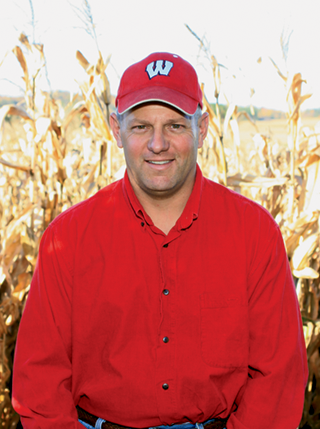It’s time to think about reviewing your plans for the planting season, and there are four basic areas you may want to spend some time on.
They include inspections, settings and replacements; reviewing and calibrating your precision-ag system; inspecting and calibrating your fertilizer system; and reviewing where your different hybrids and varieties will be planted.
Inspecting, Refining
Remember that the performance of your planter is influenced by how you operate it after various items, listed below, are adjusted and maintained properly.
I think it’s important to run your planter between last year’s rows so it you can avoid running through attached residue and the machine can work efficiently.
Here are several areas of your planter to look over, and each can contribute to the machine’s performance.
1. Planter Frame
Wheel-Lift System: Check over the planter frame for cracks or loose hinging joints. Retighten wheel modules and flexing points. Check wiring connections on hydraulic fold boxes to make sure there is no corrosion, and repair any damage to harnesses. Make sure the frame is running level when the planter is in the plant position.
2. Planter Drive System
Check bearings on hex shafts and transmissions, and check chains to ensure they move freely.
3. Row Units
Make sure the row-attachment bolts are tight. Check for any play in the parallel arms and replace bushings if necessary.
4. Drive Chains Or Drive Shafts
Make sure chains are free and don’t have any kinks in them. If you can, soak chains in oil, and oil them frequently with chain lube. Chain stiffness causes jerking of the seed meter, which, in turn, causes uneven stands.
5. Seed Meters
Have meters tested on a test stand to make sure they’re working correctly. Replace wear parts according to manufacturer specifications. If it’s a vacuum or air planter, check air pumps and replace the oil in gearboxes per manufacturer specifications.
6. Seed Tubes
Check seed tubes for wear and replace if necessary. Also clean sensors and wires.
7. Seed Discs
Scrapers: Check the disc diameter and replace if worn over manufacturer specifications. Adjust no-till coulters so they’re running ½ inch above the seed-disc depth. Check and replace inner and outer scrapers, if worn, to ensure the blades operate cleanly and pull soil out of the seed trench.
8. Row Cleaners
Coulters: Re-tighten row-cleaner attachment bolts and grease bearings on row cleaners and coulters. Check coulter diameter and replace if worn over manufacturer’s specifications. Make sure coulters are running about
½ inch above the seed-disc depth.
9. Press Wheels
Make sure bearings are tight and that the rubber of steel closing wheels are running true and free.
Fertilizer Tools
In no-till you may be using a starter-fertilizer coulter and/or a pop-up fertilizer system. Make sure the system is calibrated properly or you could have some seed or germination damage.
- Check over and replace any worn fertilizer discs and scrapers and adjust clearances between knives and blades. Also check depth of application.
- Replace any worn fertilizer tubes and hoses.
- Check hoppers for cracks and check tanks and filters on liquid systems.
- Check calibration of dry and liquid systems to make sure they are delivering the correct amount of fertilizer.
- If using liquid tubes in the opener, make sure there is no side or bottom wear on the tubes and replace if necessary.
Be Precise
Your precision-ag system should be re-calibrated each year so you’re making decisions with accurate data.
Do both a distance and seed-meter calibration to ensure the correct constants are being used in your software. This ensures the electronic-meter information can be translated into the correct information.
If you’ve switched tractors, you’ll need to re-configure the software so you’ve entered the correct location of the GPS receiver on your planting tractor, and the hitching points relative to the hitching points on your tractor and row units.
The software uses this information to correctly compute where the planter units are running relative to the GPS receiver on the tractor. This is important for your row shutoffs to work correctly.
Calibrate the hydraulic drives to your planter monitor to make sure the shaft-sensor constant, which is taking shaft speed from your hydraulic drive, is correctly estimating the speed of your seed meter to plant the correct seed population.
Your seed sensors and planter monitor, and/or precision-ag planting module, should show the same amount of seeds counted through the seed tubes as the population your hydraulic drive is producing and showing on your hydraulic-drive population estimate.
Also consider entering your planting intentions into your monitor before the season. It will store all this information for you, instead of you having to enter it while planting. This will also give you time plan out your seed use for the season.






